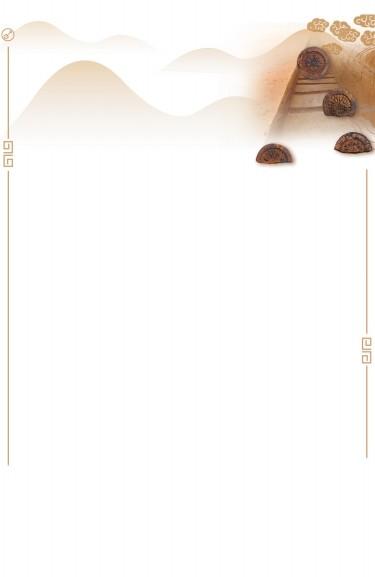
Ruts on the road between the squares on the east side of the Zhengpingfang ruins
Lotus-patterned tiles excavated from the Zhengpingfang site
Dahe Network News (Henan Daily reporter Chen Zhuo, Zhang Tiyi, Wen Xiaojuan) On December 14, the reporter learned from the important progress work meeting of the "Archaeology China" major project held by the State Administration of Cultural Heritage in Beijing that after two years of archaeological excavations, the archaeology of the Zhengpingfang site in Luoyang City, Sui and Tang Dynasties has made significant progress, and several courtyard remains have been found in the workshop, and archaeologists speculate that it is the residence of Princess Taiping of Tang, the Confucius Temple, and the Guozijian.
The ruins of Zhengpingfang are located at the junction of Zhao Village and Xigang Village in Anle Town, Luolong District, Luoyang City, and during the Tang Dynasty, this square was on the east side of the Dingding Gate, which was a very important and representative Lifang in Luoyang City. In addition to the Confucius Temple, the Guozijian, the Taiping Princess Residence, etc., there are also the Bingbu Shangshu Li Yixiu Residence, Henan Yin Pei Yuan's Residence, etc.
Sui and Tang Luoyang City is the first batch of national key cultural relics protection units. In order to provide the necessary basis for the protection of Luonanlifang District and promote the protection and display and utilization of sites in Luoyang Chengfang District of Sui and Tang Dynasties, since May 2020, the Institute of Archaeology of the Chinese Academy of Social Sciences, the Luoyang Institute of Cultural Relics and Archaeology and other units have jointly carried out continuous archaeological excavations on Zhengpingfang and made significant progress.
According to the excavation results, the four to four squares of ZhengpingFang are basically clear, with an east-west width of 464.6 meters, a north-south length of 533.6 meters, and a wall width of about 1.3 to 1.4 meters. The general location of the north and south gates is clear. The location, width and preservation of the three avenues outside the square, namely the cross street road and the south (Yongtongmen Street), the east and the north street outside the square, are clear. Among them, the east-west street in the square is about 10 meters wide, and the north-south street is about 8.7 meters wide; the Yongtongmen Street and the east side street on the south side of Zhengpingfang are about 71.7 meters wide, and the north side street is 33.4 meters wide. Archaeologists found ruts on the streets, and you can imagine the scene of the traffic at that time.
Shi Zishe, head of the Luoyang Tangcheng Task Force of the Institute of Archaeology of the Chinese Academy of Social Sciences, introduced that they found a large courtyard in the western half of Zhengpingfang, which is a large courtyard layout of symmetrical multi-entry in the central axis, with a width of about 225 meters from east to west, a depth of about 535 meters from north to south, the width of the north wall and the east wall of the courtyard is significantly wider than the square wall, and the north wall exceeds the square wall by 2.1 meters. On the north-south axis of the house center, five large rammed earth buildings were found on the foundation site of the platform, as well as the remains of the attached courtyard wall and gallery. Combined with the literature, it should be the location of the Taiping Princess's residence, that is, the location of the later Anguo Female Taoist Temple.
In addition, the complex of buildings found in the southeast corner of Zhengpingfang is likely to be a group of official buildings, part of the Guozijian and Confucius Temples. Among them, the southern area is the gate site, and the northern area is the main building, especially the large rammed earth building that has not yet been excavated, which is large in volume and rigorous in layout, and is an important hall-style building.
Zhao Xiaojun, president of the Luoyang Institute of Cultural Relics and Archaeology, told reporters that the Zhengpingfang site is a vivid example of the square system in the capital of the Tang Dynasty, and the pattern of the Dingzi Street connecting the north and south square gates seen in the excavation, as well as the symmetrical and multi-entry courtyard layout of the central axis, embodies the traditional urban planning ideas of ancient China. This archaeological excavation is of great value to the study of the history of the political system and social life of the Tang Dynasty.
According to the excavation results, the four to the four of ZhengpingFang are basically clear
It is 464.6 meters wide from east to west
It is 533.6 meters long from north to south
The walls are about 1.3 to 1.4 meters wide
Results of archaeological excavations in 2020-2021
Up to now, the Zhengpingfang site has excavated more than 10 areas
◎ Among them, there are eight selective cloth squares to understand the situation of Zhengpingfang Four to and Cross Street in the square
They are the southeast corner and East Fangjian Road, Nanfangmen, Southwest Corner, Northwest Corner, Beifangmen, Northeast Corner and North Fangjian Road, East Fangjian Road, Fangnei Cross Street and other areas
Relevant information and pictures are provided by Luoyang Institute of Cultural Relics and Archaeology